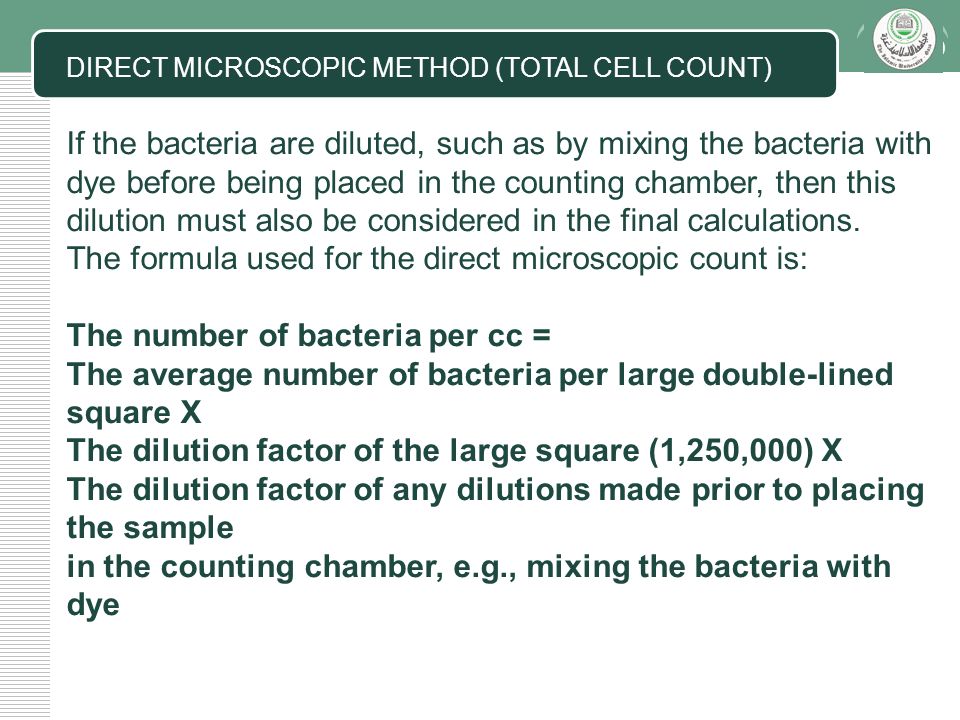What Are Some Advantages And Disadvantages Of The Serial Dilution Agar Plate Te

Serial dilution helps to choose a dilution which is relevant to our experiment. Often the standard which is given to you in the lab is far to strong for the experiment and it needs to be diluted. Many students have difficulties with dilution theory, particularly with serial dilutions. One ml of a turbid culture evenly over the surface of a nutrient agar plate, you would evenly. The buffer is called 'TE (pH 8.0)', and consists of 10 mM Tris-HCl, a pH. What are the advantages / disadvantages of each method?
Advantages of 'Serial Dilutions' This section is not a recipe for your experiment. It explains some principles for designing dilutions that give optimal results. Once you understand these principles, you will be better able to design the dilutions you need for each specific case.
Often in experimental work, you need to cover a range of concentrations, so you need to make a bunch of different dilutions. For example, you need to do such dilutions of the standard IgG to make the standard curve in ELISA, and then again for the unknown samples in ELISA. You might think it would be good to dilute 1/2, 1/3, 1/10, 1/100. These seem like nice numbers. There are two problems with this series of dilutions. • The dilutions are unnecessarily complicated to make. You need to do a different calculation, and measure different volumes, for each one.
It takes a long time, and it is too easy to make a mistake. • The dilutions cover the range from 1/2 to 1/100 unevenly. In fact, the 1/2 vs. 1/3 dilutions differ by only 1.5-fold in concentration, while the 1/10 vs. 1/100 dilutions differ by ten-fold. If you are going to measure results for four dilutions, it is a waste of time and materials to make two of them almost the same.
And what if the half-maximal signal occurs between 1/10 and 1/100? You won't be able to tell exactly where it is because of the big space between those two. Serial dilutions are much easier to make and they cover the range evenly. Serial dilutions are made by making the same dilution step over and over, using the previous dilution as the input to the next dilution in each step. Since the dilution-fold is the same in each step, the dilutions are a geometric series (constant ratio between any adjacent dilutions).
Download 'I am bad boy wmv' video of mp4 format in 640x360 resolution screen. Watch online 'I am bad boy wmv' High Quality video of 3gp format in 320x240 resolution screen. Latest trailer of 'I am bad boy wmv' video of flv format in 400x240 resolution screen. I am bad bad boy song mp3 download. Preview our exclusive 'I am bad boy wmv' Medium Quality video of webm format in 640x360 resolution screen.
For example: 1/3, 1/9, 1/27, 1/81 Notice that each dilution is three-fold relative to the previous one. In four dilutions, we have covered a range of 181/3 = 60-fold. If that isn't enough range, consider a series of five-fold dilutions: 1/5, 1/25, 1/125, 1/625 Here we've covered a (625/5) = 125-fold range. No matter where the half-max falls in a series of 5-fold dilutions, it is no more than 2.2-fold ('middle' [square root] of a 5-fold step) away from a data point -- so the coverage of the range is thorough and even. When you need to cover several factors of ten (several 'orders of magnitude') with a series of dilutions, it usually makes the most sense to plot the dilutions (relative concentrations) on a logarithmic scale. This avoids bunching most of the points up at one end and having just the last point way far down the scale. Before making serial dilutions, you need to make rough estimates of the concentrations in your unknowns, and your uncertainty in those estimates.
For example, if A 280 says you have 7.0 mg total protein/ml, and you think the protein could be anywhere between 10% and 100% pure, then your assay needs to be able to see anything between 0.7 and 7 mg/ml. That means you need to cover a ten-fold range of dilutions, or maybe a bit more to be sure.
If the half-max of your assay occurs at about 0.5 mg/ml, then your minimum dilution fold is (700 mg/ml)/(0.5 mg/ml) = 1,400. Your maximum is (7000 mg/ml)/(0.5 mg/ml) = 14,000. So to be safe, you might want to cover 1,000 through 20,000.
In general, before designing a dilution series, you need to decide: • What are the lowest and highest concentrations (or dilutions) you need to test in order to be certain of finding the half-max? These determine the range of the dilution series. • How many tests do you want to make?
This determines the size of the experiment, and how much of your reagents you consume. More tests will cover the range in more detail, but may take too long to perform (or cost too much). Fewer tests are easier to do, but may not cover the range in enough detail to get an accurate result. • What volume of each dilution do you need to make in order to have enough for the replicate tests you plan to do? Now suppose you decide that six tests will be adequate (perhaps each in quadruplicate). Well, starting at 1/1,000, you need five equal dilution steps (giving you six total dilutions counting the starting 1/1,000) that end in a 20-fold higher dilution (giving 1/20,000). You can decide on a good step size easily by trial and error.